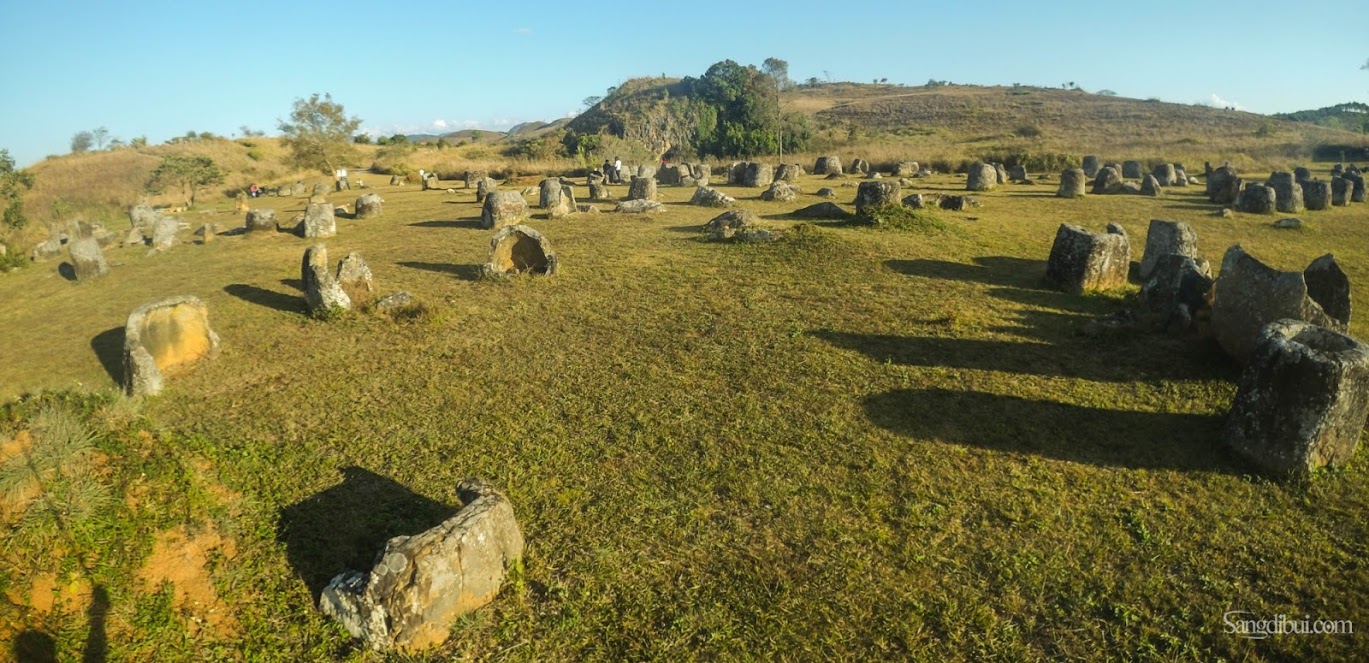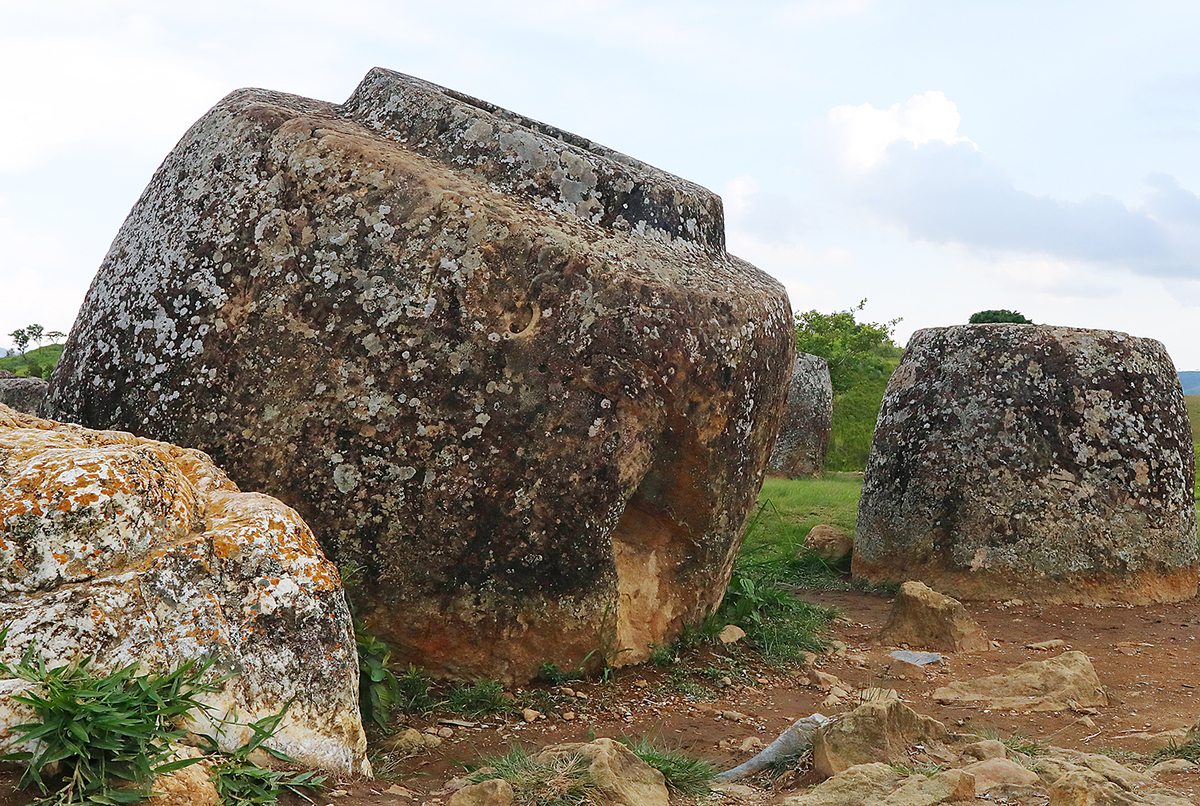The Plain of jars is a collection of large stone jars interspersed throughout the Xieng Khouang plain in the Lao Highlands. The stone structures are mostly made of sedimentary rock and, ranging from 3 to 10 feet in height (1 to 3 meters), each can weigh up to 14 tons.

To date, the origin of the jars is unknown, though archaeologists believe that they were originally used between 1,500 and 2,000 years ago. Many researchers have theorized that the jars may have once served as funerals urns or food storage.
As local Laotian legend would have it, the jars were created by Khun Cheung, an ancient king of giants who lived in the highlands. It is said that Cheung, after fighting a long and victorious battle, created the jars in order to brew huge amounts of celebratory lao lao rice wine.

The Plain of Jars received relatively little Western attention until the 1930s, when French archaeologist Madeleine Colani began surveying the area. Though previous reports of the jars had cited the existence of goods such as carnelian beads, jewelry, and axes, the site was mostly looted by the time Colani arrived.
Despite this, Colani discovered a nearby cave housing human remains, such as burned bones and ash, leading her to believe that the jars were funeral urns for chieftains. Colani excavated the artifacts, some of which dated to between 500 BC and 800 AD.


Though the Xieng Khouang plain remains the central site of the jars, similar clusters can be connected to form a linear path all the way to northern India. The existence of similar jar clusters in other parts of Asia also led to the belief that the jars were part of a large trade route. Some researchers believe that the jars collected monsoon rainwater for caravan travelers to use during dry season.

Researchers have traced the jars back to a quarry a few miles outside of Phonsavan. The area was also used extensively during the war by the Pathet Laos (Lao Nation, the communist political movement) who hid in natural and human-made caves here in the quarry.

According to Atlas Obscura













